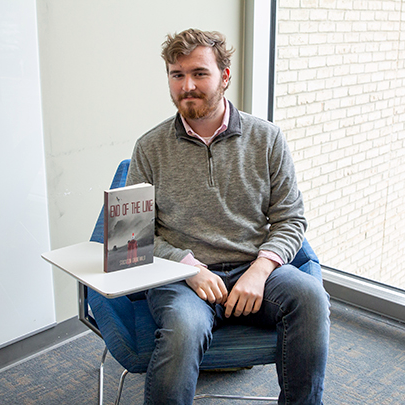In the first presidential debate of 1960, then-Senator John F. Kennedy, (D-Mass.) noted that, “I saw cases in West Virginia, here in the United States, where children took home part of their school lunch in order to feed their families because I don’t think we’re meeting our obligations toward these Americans.” Sixty years later, opponents have mocked the War on Poverty, and conventional wisdom holds that the anti-poverty programs championed by the federal government are, at best, mismanaged; at worst, they contribute to a culture of dependency, degrading Americans’ self-reliance. Since 2020, Americans of all passions and persuasions have been subjected to the scourge of SARS-CoV-2. In that time, legislators have sought means to mitigate damage not just to human health but also to the pocketbooks of working people all across this country. One of the most ingenious solutions proposed, the Expanded Child Tax Credit, deserves to live well beyond the great crisis we find ourselves in and serve as the foundation for our future efforts to combat childhood poverty, equipping our next generation with the tools to navigate a century of obstacles and opportunity.
The brainchild of Senator Michael Bennet (D-Conn.), the expanded child tax credit (CTC) was an integral component of President Biden’s COVID-19 relief package, the American Rescue Plan, which Congress narrowly passed in March 2021. From July 2021 onward, the CTC entitled parents of children up to age six and those with dependents between six and 17 years old to a tax credit of $3,600 and $3,000, respectively. However, some restrictions applied; the expanded CTC was means-tested to heads of households making up to $112,500 a year or joint filers bringing in up to $150,000 annually. Beyond this income threshold, one could expect pre-existing tax law to apply: a $2,000 refund with descending benefits until $400,000, coinciding with the president’s tax pledge. And, unlike previous incarnations of the CTC, these refunds were restructured into a monthly rebate of $250 or $300 deposited into parents’ bank accounts.
In the waning summer and fall months of 2021, 76% of American parents received their monthly refunds. At its apex in October 2021, 61.6 million children were potential beneficiaries of the program — and the results have demonstrated a widespread effect for a relatively inexpensive effort. A report from the University of Oregon’s Rapid Assessment of Pandemic Impact on Development-Early Childhood project found that over half of those parents used the credits for basic needs, such as food and housing; a third of respondents used their payment for childcare; another third saved, and one fifth sent their funds to schools and recreational activities. Columbia University’s Center on Poverty and Social Policy found that each payment kept anywhere from 3.0 to 3.8 million children out of poverty by itself, constituting a 29.4% reduction in the number of impoverished children — a decrease of 17% to 12%, altogether, with other COVID countermeasures.
For Black and Hispanic children, the percentage of impoverished children decreased by 10% altogether, constituting over 2 million children going to bed each night without the specter of poverty looming overhead. Additionally, the National Bureau of Economic Research finds that “[CTC] payments strongly reduced food insufficiency: the initial payments led to a 7.5 percentage point (25%) decline in food insufficiency among low-income households with children.” Other COVID cash-assistance programs have certainly alleviated many financial burdens for families; stimulus and SNAP benefits are also factored into Columbia’s calculations — but stimulus payments have ended like other pandemic benefits. And, even with other pandemic protections, the CTC stands second to none on cost-effectiveness. A recent New York Times article by Ben Casselman puts this policy in perspective: “The Treasury Department paid out about $80 billion over six months in the form of checks and direct deposits of up to $300 per child each month. That is far less than the more than $240 billion in stimulus payments issued on a single day last March.”
Praise surrounding the CTC has prompted the president to persistently lobby for its inclusion into his signature social and climate policy proposal, the Build Back Better Act. Yet, such a remedy for eliminating childhood poverty has fallen on deaf ears, even in some Democratic circles, as Senator Joe Manchin (D-W.Va.) opined that refund recipients will spend their benefits on opioids. Without Sen. Manchin’s seal of approval, the expansion’s expiration is inevitable: payments families received on December 15 will constitute the last of the monthly installments.
For the president, new social spending without the CTC is a non-starter. Should negotiations with Manchin stall, Senator Mitt Romney’s (R-Utah) Family Security Act may offer the White House a way forward. Romney’s regulatory remedy relies on the elimination of Democratic tax priorities, such as the State and Local Deduction Tax (SALT), and the Temporary Assistance for Needy Families Program (TANF), in exchange for higher childhood allowances: up to $4,200 for children age five and under and $3,000 for age six and older. Additionally, Romney’s plan puts a cap of $15,000 on annual benefits — Biden’s expanded CTC has no such cap.
Despite the applause from advocates and academics, the CTC’s expansion experienced a lukewarm response from the general public. In some polling, the CTC’s high marks could serve as an encouragement to legislators to continue pursuing similar programs, but others’ responses have generated grim prospects. Without a chorus of bipartisan voices and a supporting symphony of advocacy groups and parents themselves, this enormously effective and efficient program may be silenced. Are children our greatest natural resource, or has the cliche grown so old that we forget its message to be true now, as it is in all times?
Featured Image by Ben Wicks on Unsplash.



0 Comments